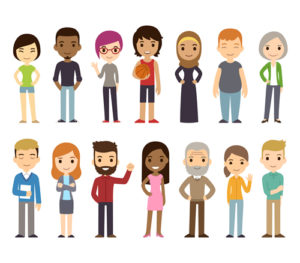Higher education is at a crossroads. Today, only half of students who enter college in the U.S. actually complete their degree within six years. Many first-generation college students are dropping out.
Research shows that student retention is not just about financial aid and grades—it’s about making students feel connected to the institution, including faculty and peers to help them overcome obstacles that will inevitably come up throughout the college experience.
This research truly resonates when I talk with advisors, many of whom share stories about needing more information to help them understand what’s really happening with the students they are trying to serve. From knowing what social activities a student is engaged in to how often a student is visiting the tutoring center, advisors tell me that having the full picture means they can guide students toward the right choices and get out in front of problems before they emerge.
So how do we help every student succeed?
(Next page: 3 ways to tackle student retention)
The solution to this challenge may not be as elusive as we think: The key is to take a student-first mindset and look holistically at their journey. From student housing to financial aid to extracurricular activities—taking every touch point into account can reveal opportunities to drive impact across campus.
Students are leaving for experiential reasons and those are within our capacity to solve, especially with technology. In fact, technology can completely transform the student experience.
I believe there are three main ways we can tackle the student retention and student engagement problem. They are all easily available for colleges and universities, and are all fueled by technology.
These practices focus on what happened to the student before he or she came to campus and what happens after he or she leaves the campus. Ultimately, the three concepts outlined below are about connections and a deeper understanding of the student.
The empowered student
Students come to their new campus life with high expectations. They are used to choices, reviews, easy transactions, and an overall click-friendly experience. The Amazon and Netflix effect is happening in higher education: apps allow students to sign up for classes, parents to pay tuition, faculty to post curriculum, and everyone to check student grades and progress. Choices, flexibility, and accessibility all play a role in keeping students enrolled by enabling them to be an active participant in their own success.
With artificial-intelligence technology powering the student experience, colleges and universities can use data to guide decision-making and help students discover new paths along their academic journey.
Know your students
Universities are starting to use technology and data to better understand the student, which in turn can lead to greater student success. By creating a data-informed culture, universities can empower advisors, students, and faculty.
A great example is at Tulane University in New Orleans. The college has built a data-driven early-alert system that alerts advisors whenever a student with a low GPA has not received advising in the last 30 days. This system lets the advisors to do what they do best: work with students and help them succeed.
Build a home
Home is familiar and deeply personal. You can be yourself.
Take Georgetown University in Washington, DC. Its new Hoya360 platform, which is built on Salesforce, was created with the student at the center and has a seamless integration between classes, faculty, student life, and alumni. The online portal allows for a continuous feedback loop. When students communicate their passions and interests to their advisors, professors, deans, and mentors, they are better able to match their students with opportunities that are meaningful to their personalized journey. Students feel at home because they can create and manage their own community. Keeping students enrolled is all about how much campus feels like a trustworthy, open, and embracing place.
When practices like these are readily available and relatable, universities can spend the time connecting with students on a deeper level, planning academic journeys, and driving a graduation pathway. Keeping students enrolled and on track for success is all about knowing them.
Successful brands today create a sense of belonging, community, and satisfaction that leads to deeper engagement with their customers and a “stickiness” that keeps them coming back. The same principles can be applied in higher ed to deepen connections and lead to a lifelong learning journey for the student.
- The link between AI fluency and the next education revolution - May 3, 2024
- Coalition looks to accelerate LER adoption in higher ed - May 1, 2024
- Selective universities won’t be disrupted - April 30, 2024

